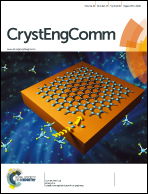Synthesis and single crystal growth of l-proline cadmium chloride monohydrate and its characterization for higher order harmonic generation applications
Abstract
The semi-organic non linear optical single crystal of L-proline cadmium chloride monohydrate was successfully synthesized and the single crystal was grown by a slow evaporation solution growth technique, using double distilled water as the solvent. The lattice dimensions of the grown crystal were examined by powder X-ray diffraction and it was found to belong to the orthorhombic crystal system with a noncentrosymmetric space group. Its crystallinity was assessed by a high resolution X-ray diffraction method and its structural imperfections were recorded using X-ray topography. The presence of functional groups was identified from heteronuclear correlation methods. Its optical behavior was examined by birefringence and photoluminescence and its optical constants were determined from UV-Vis. analysis. Its thermal and third order nonlinear optical properties were characterised by photopyroelectric and Z-scan methods, respectively. The mechanical and ferroelectric behavior was also assessed on the grown single crystal of L-proline cadmium chloride monohydrate.


 Please wait while we load your content...
Please wait while we load your content...